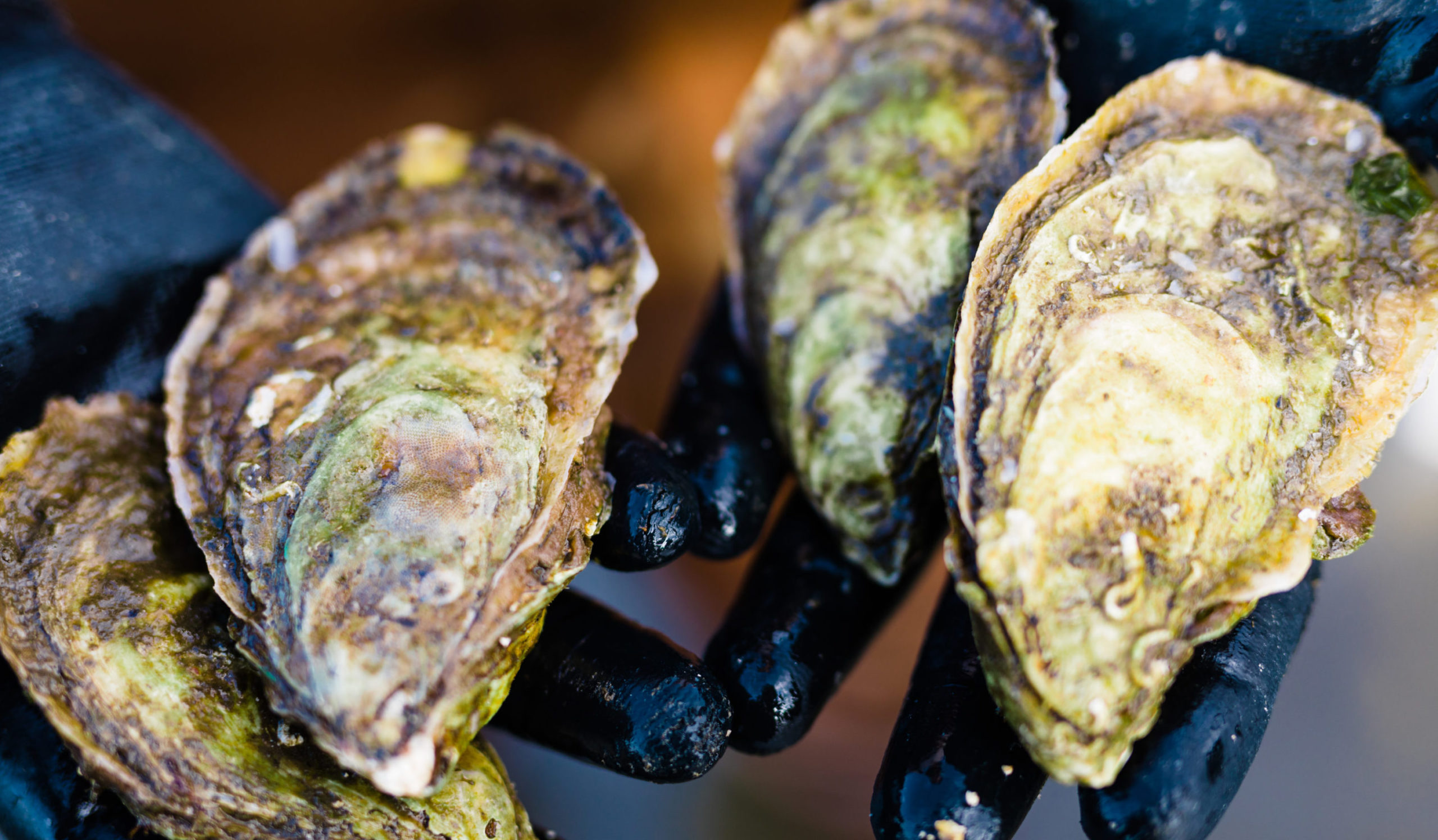Can Insight from Ancient Oysters Provide Solutions for Modern Oyster Management?

The fossil record may suggest keys to protecting the modern-day species.
For anglers, restored oyster reefs provide healthy habitats that are great places for fishing. Ongoing threats to oysters, such as disease and harvesting, mean that unless we make deliberate efforts to restore them, we are in danger of losing the benefits oyster reefs provide.
Research Need
Oysters are a valuable seafood product, and restoration and conservation efforts have historically focused on protecting juvenile oysters. Mature oysters devote more energy into reproduction than shell growth, and they could be a valuable asset not currently receiving adequate levels of protection. Learning more about oysters of the past, which might have faced fewer challenges, could inform how we think about both juvenile and mature oysters when conceiving new strategies for oyster management.
What did they study?
Researchers gathered data from five sites in North Carolina, Maryland, and Virginia. They collected oyster shells from the Ice Age, the colonial era and today. Then, they examined salinity and temperature from all three time periods, as well as oyster shell height, age and growth rates.
What did they find?
Of particular note, oysters in the Chesapeake Bay area from the Ice Age grew slower but were larger and lived longer than their colonial-era or modern counterparts. The findings also revealed that water nutrient levels were likely lower during the Pleistocene, meaning that the increased rates of oyster growth today by comparison could have resulted from higher nutrient levels.
Other studies have shown that traditionally undisturbed oysters at the Tangier Sound and Elizabeth River are larger and more disease resistant. This suggests that, if given the opportunity, Chesapeake Bay oysters also could evolve disease resistance and grow larger.
Anything Else?
Overharvesting and disease particularly challenge mature female oysters, which, in turn, negatively affects the overall oyster population due to lower reproduction rates.
In addition, although modern oysters in North Carolina’s Pamlico Sound grow six to seven times faster than fossil oysters, the short life spans of both fossil and modern oysters in N.C. resulted in little to no difference in the parameters of these populations over time. The reasons behind the differences between the Chesapeake Bay oysters and North Carolina’s oysters remain unknown.
So what?
Based on these results, the researchers recommend new harvesting restrictions on adult oysters. Possible solutions include decreasing the harvest total, establishing a maximum size limit, and creating oyster-specific marine protected areas.
Reading
Kusnerik K.M., Lockwood R., Grant A.N. (2018) Using the Fossil Record to Establish a Baseline and Recommendations for Oyster Mitigation in the Mid-Atlantic U.S.. In: Tyler C., Schneider C. (eds) Marine Conservation Paleobiology. Topics in Geobiology, vol 47. Springer.
The Ellen Stofan Fund from the College of William and Mary supported this research.
summary compiled by Katelyn Vause
lead photo by Baxter Miller
The text from Hook, Line & Science is available to reprint and republish at no cost, but only in its entirety and with this attribution: Hook, Line & Science, courtesy of Scott Baker and Sara Mirabilio, North Carolina Sea Grant. HookLineScience.com
Sign up for the Hook, Line & Science newsletter here.
- Categories:



